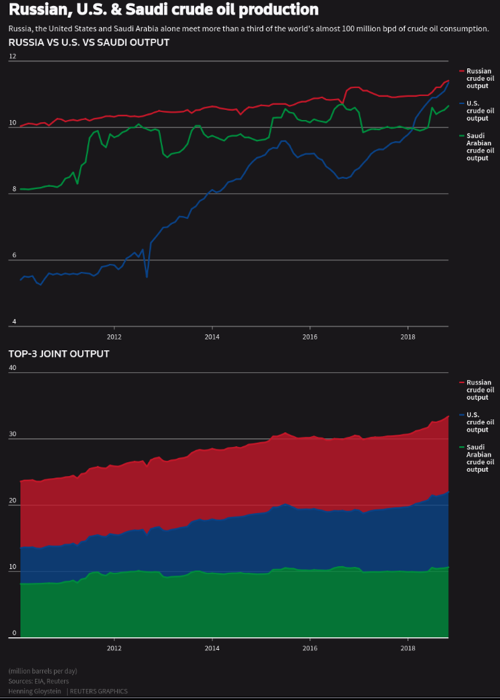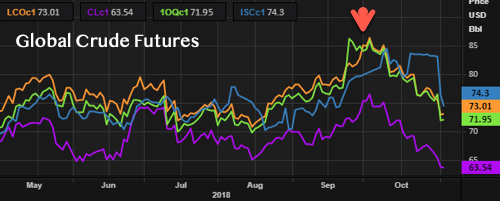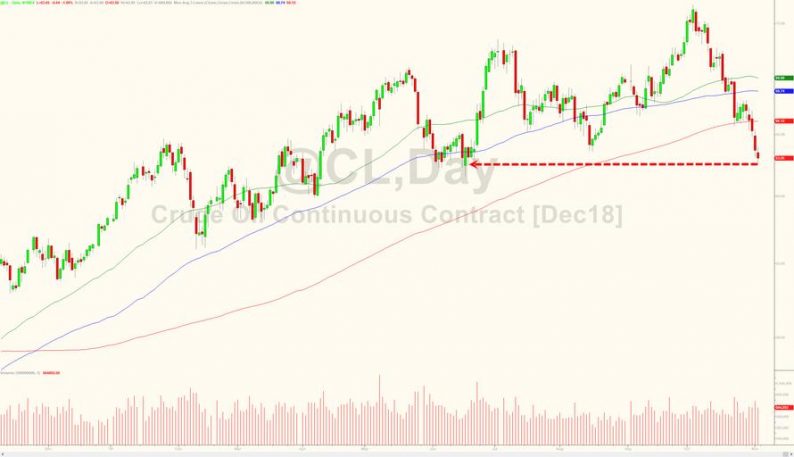Oil declined more than 3% on Thursday, and extended those losses Friday, with ICE West Texas Intermediate (WTI) Light Sweet Crude Oil Futures probing lows not seen since April, due to weakening global demand at a time when the output from the Organization of the Petroleum Exporting Countries (OPEC), Russia, and the U.S. is rising.

Record crude production from the U.S. and Russia, along with a surge from OPEC, has once more created oversupplied conditions.
Russian, U.S. & Saudi crude oil production (data via Reuters Eikon Graphics)

Oil prices started declining in early October on fears that global economic momentum was waning as the U.S-China trade war escalates, and a slowdown in emerging market economic data (primarily in Asia) was becoming more evident.
Global Crude Futures (data via Reuters Eikon)

WTI has plunged 17% since its 76-handle probe in early October. Analysts told Reuters they anticipate more selling in coming sessions, noting that oil did not bounce on Thursday on weakness in the dollar, nor did it positively correlate with the rebound in equity markets.
WTI monthly futures (data via Reuters Eikon)

Besides global growth momentum waning, another reason for downward pressure in oil could be that Washington just granted several waivers on sanctions on Tehran, allowing countries like South Korea, Japan, and India to continue to import Iranian crude (in other words, more supply).
John Kemp, Reuters Senior Market Analyst of Commodities and Energy, believes oil prices are falling as a broad range of financial and real-economy indicators show the global economy is slowing.
“The depth and duration of the slowdown is impossible to gauge at this point, whether it turns out to be simply a mild and short-lived “soft patch”, a longer but still positive “growth recession” with output falling relative to trend, or an “outright recession” with activity falling in absolute terms.
Recent declines in equity markets and softness in freight indicators may turn out to be a false alarm or a pause within an extended cycle rather than mark a cyclical turning point.
Most commentary about the economic cycle is still influenced by the last deep and wrenching recession which accompanied the global financial crisis in 2008/09.
But severe recessions have not been common since the end of the Second World War and most downturns have proved milder, which therefore seems a more likely prediction for the next cyclical slowdown.
In the United States, post-1945 recessions have tended to be short, lasting less than a year in most instances, and in some cases have seen business activity level off rather than decline,” said Kemp.












Leave A Comment